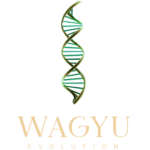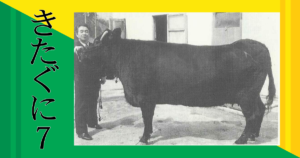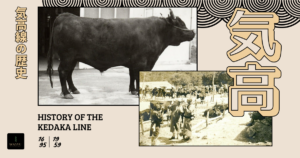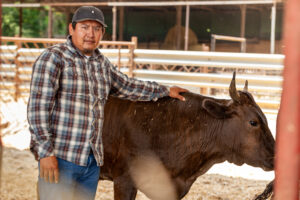Hay Fed vs Grain Fed vs Grass Fed- Which One Is Better?
Japan’s esteemed beef industry, known for its highly valued marbled beef sourced from Japanese Black cattle, has recently shifted its focus towards urgent issues including rising oil prices, food production efficiency, and environmental sustainability. Japan’s beef cattle business has notable obstacles, mostly pertaining to production costs and environmental effect, due to its annual importation of a considerable quantity of food and animal feed, primarily grain feed.
Despite the implementation of many strategies to address these difficulties, such as the utilization of local grass resources and the regulation of concentrate composition, there is a limited body of research that specifically examines the consistent utilization of hay during the fattening stage, particularly in rural regions of Japan. The primary objective of this study is to conduct a comparative analysis of the economic, sensory, and environmental dimensions associated with three distinct beef production systems in Japan. Specifically, the study aims to offer valuable insights to stakeholders and contribute to the development of more sustainable beef production practices in the country.
Feed Cost
Analysis of animal growth and intake across the feeding systems revealed significant variations in final weight at different stages. At 10 months of age, the conventional marbled beef group exhibited the highest body weight, followed by the high hay-fattened beef and grass-only fed beef groups. Similar trends persisted at 26 months, with the conventional marbled beef group consistently having the highest body weight. Feed intake and costs varied significantly among the groups, with the grass-only fed beef system demonstrating lower intake and costs compared to conventional marbled beef and high hay-fattened systems, particularly during the 11–26 months period.
Consequently, the feed cost per head and per kilogram of bodyweight gained were notably lower in the grass-only fed beef group, underscoring its cost-effectiveness compared to conventional and high hay-fattened systems, where grains are predominantly used for fattening (Sithyphone et al., 2011).
Meat Quality from Taste Panel Test
A panel test conducted by Sithyphone et al. (2011), primarily on roast beef from high hay-fattened and grass-only fed beef, revealed distinct preferences among panelists. While high hay-fattened beef garnered high acceptability scores across flavor, juiciness, tenderness, and overall palatability, grass-only fed beef received favorable texture ratings but lower flavor and tenderness scores.
Gender and generational differences in taste preferences were evident, with high hay-fattened beef being preferred by a majority, particularly among younger age groups. These findings suggest that while high hay-fattened beef maintains characteristics of grass-fed beef, it is well-received by Japanese consumers, offering a viable alternative to conventional marbled beef.
Volume of CO2 Emissions
Environmental impacts associated with each feeding system were evaluated in terms of CO2 emissions by Sithyphone et al. (2011). Results indicated significant disparities, with the conventional marbled beef system exhibiting the highest environmental impact, followed by the high hay-fattened and grass-only fed beef systems.
Notably, the grass-only fed beef system demonstrated the least harmful environmental impact, emitting substantially lower volumes of CO2 compared to conventional marbled beef and high hay-fattened systems. The high hay-fattened system, characterized by higher methane emissions but lower CO2 emissions, emerged as a more environmentally friendly alternative to the conventional marbled beef system, emphasizing the importance of sustainable beef production practices.
Conclusion
The Wagyu beef industry faces critical challenges concerning rising oil prices, food production efficiency, and sustainability. Despite ongoing efforts to address these issues, such as utilizing local grass resources and regulating concentrate composition, we must consider their economic, sensory, and environmental dimensions.
Grass-only fed beef systems emerge as the most cost-effective option and thus the most economical. In terms of their impact on the environment, environmental analysis underscores the need for sustainable practices, with the grass-only fed beef system demonstrating the least harmful impact. Overall, these insights can guide stakeholders in adopting more sustainable and economically viable practices, ensuring the long-term resilience of Japan’s esteemed beef industry.
References
Gotoh T, Albrecht E, Teuscher F, Hawabata K, Sakashita K, Iwamoto H, Wegner J. 2009. Differences in muscle and fat accretion in Japanese Black and European cattle. Meat Science 82, 300–308.



